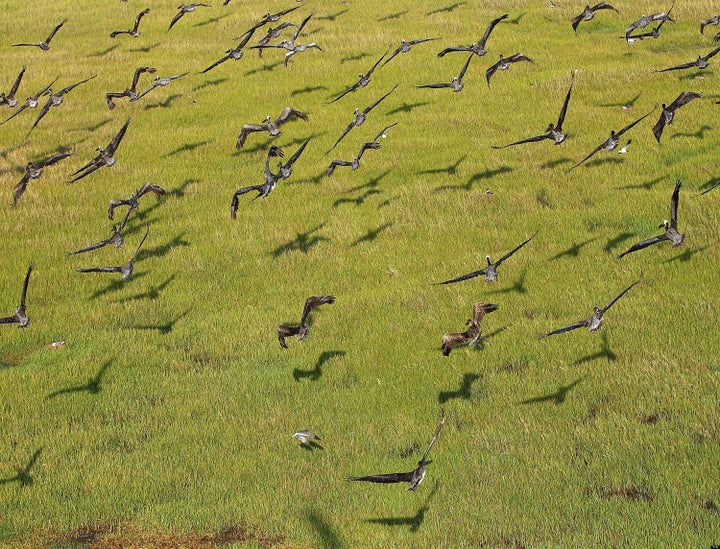
Many Canadians have been anxiously following the ongoing "oilpocalypse" in the Gulf of Mexico and are experiencing a deep sense of unease as they scan the daily media reports. Such foreboding is clearly understandable as one can't help thinking this might be a nightmarish peek into one possible future for British Columbia as federal and provincial politicians here in
Canada lay the groundwork to transform our Pacific coast into an"energy corridor." They dream of seismic testing, offshore drilling, pipelines from the tar sands, and oil tankers plying our rocky coast; this is what passes as visionary in the age of government of the corporations, by the corporations and for the corporations.
In the wake of the Gulf Coast disaster, Canadian federal opposition parties have called for emergency hearings before the Commons Natural Resources Committee to discuss the need for more stringent safeguards against oil spills in Canada's Arctic. But the public needs to be properly and clearly informed as to the risks and tradeoffs with regard to proposed
oil development and transport for the B.C. coast as well; Raincoast Conservation Foundation's recently released report, What's at Stake: The cost of oil on British Columbia's priceless coast, is designed to do just that; we encourage you to go to the Raincoast website and download the report.
Enbridge Inc.'s proposal to build a twin pipeline from Alberta's tar sands to the north coast of B.C. means we could see supertankers on the coast transporting "the world's dirtiest oil" to hydrocarbon hungry Asian and American markets. Enbridge proposes to construct and operate two pipelines, 1,170 kilometers in length, between an inland terminal at Bruderheim, Alberta, and a marine terminal near Kitimat, B.C. One of the pipelines will carry crude oil west to Kitimat and the other line will carry
condensate east to Bruderheim. The pipeline would ship over 500,000 barrels of crude oil per day and, twice a week, 350-metre long supertankers would pass by the very spot where B.C. Ferries' Queen of the North went down in 2006.
This presents a very significant threat to coastal marine and terrestrial species and ecosystems, as well as to the food supply and livelihoods of First Nations and coastal communities. Coastal First Nations executive director Art Sterritt summed up the threat posed by oil tankers: "The minute there is tanker traffic, there is damage to a way of life."
It was fascinating to recently read in the Financial Post how Enbridge CEO Patrick Daniel is flogging his company's "Northern Gateway Pipeline" project, tossing out empty warm and fuzzy platitudes like "We're doing it...for Canada." His assertion that tar sands development and the Enbridge pipeline, as well as the attendant oil tanker traffic that will put B.C.s coastal environment at great risk, is at heart an egalitarian crusade to help poor energy-starved third world countries is cynical beyond belief.
In another related news item in the Globe and Mail, Daniel was quoted as follows: "But can we promise there will never be an accident? No. Nobody can." Glib statements regarding the risk of a catastrophic oil spill on the B.C. coast if his company's pipeline is approved and constructed are likely cold comfort to most British Columbians, the majority of who would prefer an
oil-free coast according to polling on the issue. In fact, a newly released
Mustel Group poll shows that 80 percent of British Columbians support banning crude oil tankers in B.C.'s coastal waters, up from 72 percent in a similar 2008 poll.
Enbridge has made much of the fact that double hull tankers would be used to transport tar sands crude from the north coast terminal in Kitimat. But double hulls have their own set of problems. In an article for the Prince Rupert Daily News, Jennifer Rice, energy campaigner for the T. Buck Suzuki Environmental Foundation, delineated several of those issues, including this
one: "When double-hulled tankers are traveling at low speeds and a collision occurs, only the first hull is punctured preventing the oil from spilling out. At higher speeds the extra hull has done little to prevent oil spills. In reality, the speed at which both hulls can be pierced is surprisingly low, as little as three knots depending on the strike angle."
Blind faith in modern technology is often misplaced; only eighteen days before the Gulf Coast disaster, in justifying his position on off shore drilling, President Barack Obama asserted that "oil rigs today don't generally cause spills as they are technologically very advanced."
Attaching a dollar value to the damage that spilled oil does to marine and terrestrial ecosystems is an impossible task. As the Wall Street Journal reported, the blame game in the Gulf of Mexico has been in full swing as BP is claiming "this was not our accident." Who will pay? If history is any indication, it likely won't be the corporate entities responsible for the disaster. The cost of the Exxon Valdez spill has been estimated at $9.5 billion, of which Exxon paid $1 billion, with taxpayers footing the rest of the bill. British Columbians cannot trust that Enbridge or any other oil industry player operating in Canada would behave any differently than BP or Exxon in the face of a catastrophic spill on B.C.'s coast.
A version of this article originally ran on Buzzflash.